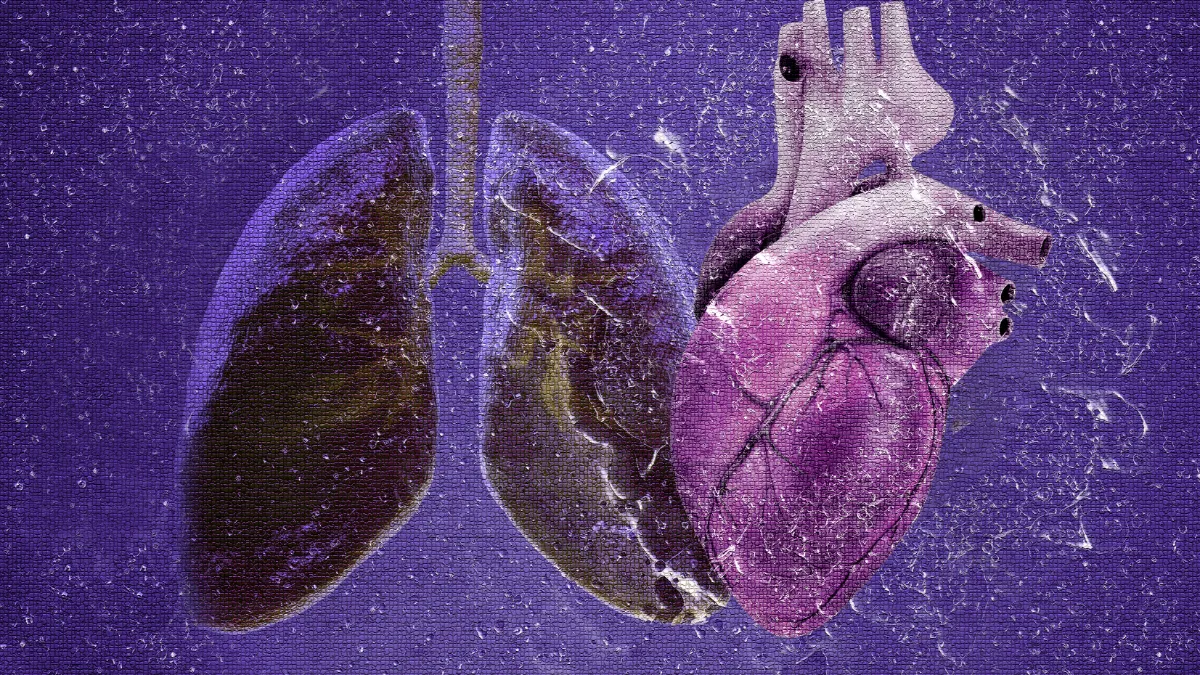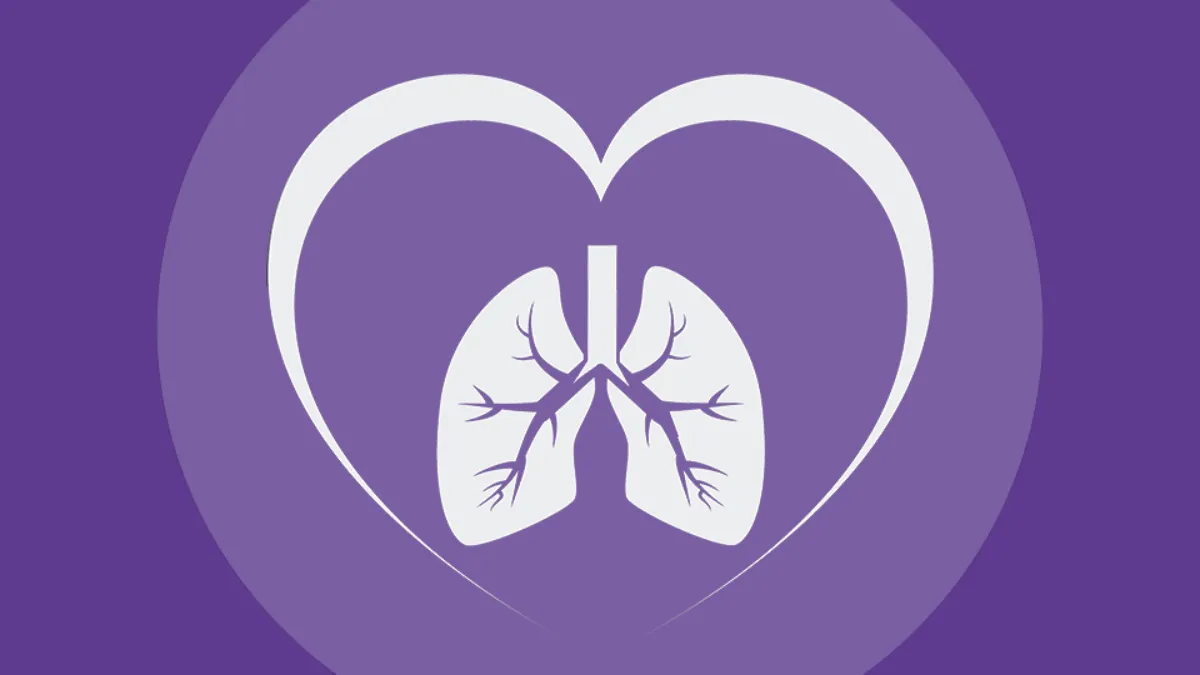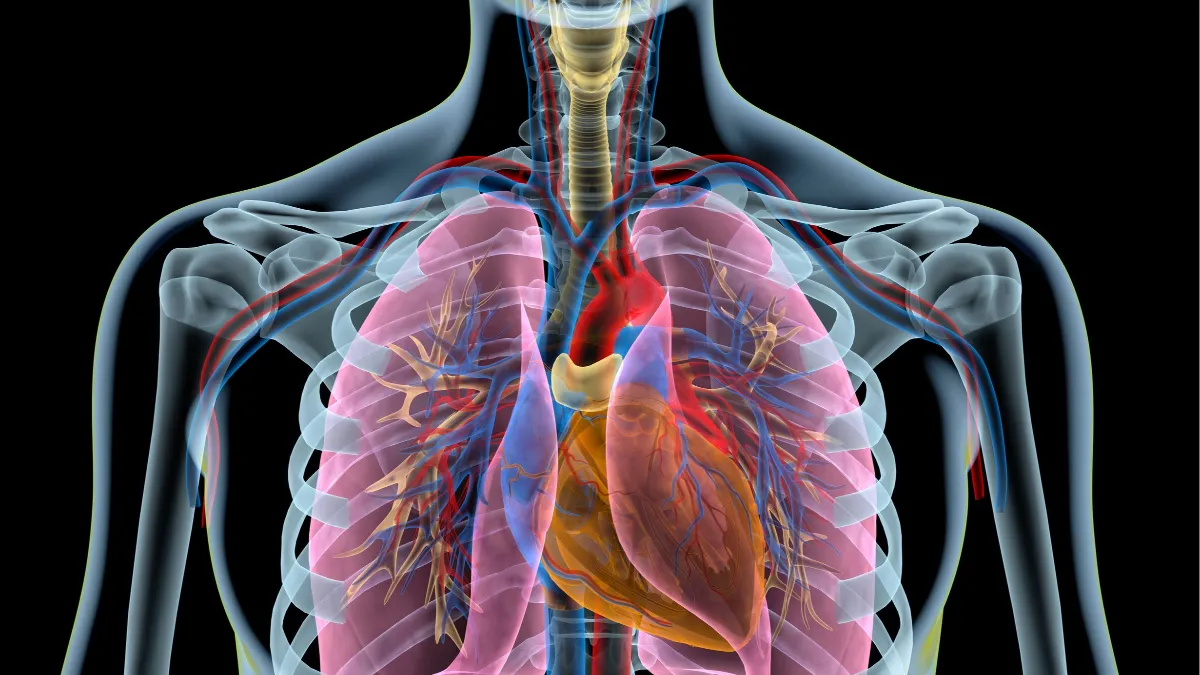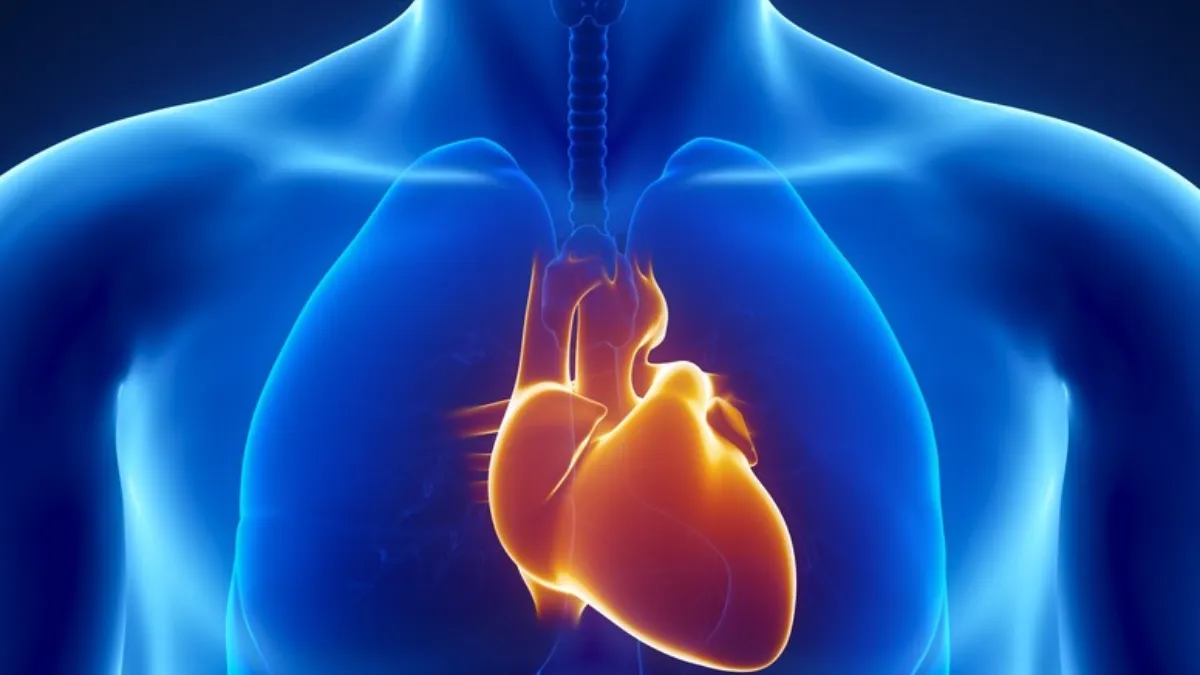How do the heart and lungs work together?

It may have never crossed your mind, but there is a good reason why your heart and lungs sit next to each other inside your chest. Even though their functions differ, the circulatory and respiratory systems work closely together.
The heart and lungs work together #
The entire process starts when you take in a breath of oxygen-filled air. The oxygen travels through your nasal passage, into the trachea, and down to the bronchial tubes inside the lungs. At the end of the bronchial tubes are tiny sacs called alveoli.
There are an average of 480 million alveoli in a healthy lung. Each time you breathe, those tiny alveoli expand, and oxygen diffuses into the pulmonary vein that travels to the left side of the heart.
Fun fact: The pulmonary vein is the only vein in your body that transports oxygen-rich blood.
Once the oxygen-rich blood reaches the left side of the heart, it gets pumped out into your arteries, where it is transported to all the cells to keep them functioning at 100%. As the oxygen-rich blood flows into cells via tiny blood vessels called capillaries, the deoxygenated, carbon dioxide-filled blood your cells no longer need flows into the other end of the capillaries called venules.
The venules send it into the larger veins, and eventually, the veins take it back to the right side of the heart and into what is often called the pulmonary loop. From there, the carbon dioxide-filled blood returns to the lungs via the pulmonary artery, where the carbon dioxide diffuses through the alveoli, where it can leave your lungs as you breathe out.
Fun fact: The pulmonary artery is the only artery in your body that transports deoxygenated blood.
Many things happen every time you breathe, and your heart beats, but this entire system only takes 16 seconds to complete as you pump about five quarts of blood throughout your body every minute!
Unfortunately, because these two systems work so closely together, problems can arise when the lungs or the heart aren’t functioning properly.
Two conditions that frequently will coincide are COPD and heart failure. Let’s look closer at these two common problems and how they relate.
COPD and Heart Failure #
Right-sided heart failure
The hallmark of COPD is hyperinflation of the lungs which limits airflow. The limited airflow increases the pressure in the cardiovascular system, called pulmonary hypertension. It is a type of high blood pressure that damages the blood vessels in your lungs, limits blood flow, and makes your heart pump harder to get blood through your lungs. Over time, this causes the heart muscles to weaken, resulting in right-sided heart failure.
Left-sided heart failure
Even though there is no direct correlation between COPD and left-sided heart failure, the two conditions can exacerbate one another. COPD causes low oxygen levels in the blood, which stresses the heart and can worsen symptoms of left-sided heart failure. On the other hand, left-sided heart failure can contribute to fluid build-up in the lungs and aggravate symptoms of COPD.
Symptoms of Cardiopulmonary Problems #
Symptoms to watch out for with COPD and heart failure include:
- Shortness of breath
- Fatigue
- Lethargy
- Fainting
- Chest pain during physical activity
- Swelling in the body and lower extremities
- An irregular heartbeat
How To Keep Your Cardiopulmonary System Healthy #
There are many things you can do to keep your heart and lungs healthy, including
- Stop smoking! When you smoke, you are at high risk for developing many health-related problems, especially COPD and heart failure.
- No vaping either! E-cigarettes are often thought of as a safe alternative to smoking, but there is growing research associating vaping with lung injury.
- Exercise and stay active. Physical activities and exercise that increase your heart rate and get you breathing deeper will help both your heart and lungs to perform their job efficiently.
- Breathing exercises. Studies have shown that deep breathing exercises can strengthen your lungs, increase lung efficiency, and improve heart rate variability.
- Nutrition and hydration. The American Lung Association suggests a diet low in carbohydrates and higher in fat along with at least six to eight glasses of water per day. Lowering your sodium intake can help reduce blood pressure and ease the burden on both your heart and lungs.
- Reduce stress. When you are under stress it can cause increased shallow breathing, a high heart rate, and release hormones that may negatively impact your heart and lungs.
Your heart and lungs work together to keep your body functioning at its highest level possible. Maintaining an active lifestyle with a nutritious diet will help them stay healthy and strong for years to come.
Clinical references come from these sources:
American Psychological Association. (2023, March). Stress Effects On The Body. https://www.apa.org/topics/stress/body
Carter, P., Lagan, J., Fortune, C., Bhatt, D., Vestbo, J., Niven,R., Chaudhuri, N., Schelbert, E.B., Potluri,R., Miller, C. (2019, May). Association of cardiovascular disease with respiratory disease. Journal of the American College of Cardiology. 2019 May, 73 (17) 2166–2177
DeMajistre, A. (2023, June). Vaping and how it affects lung function. N.d.d. Medical Technologies. https://nddmed.com/blog/vaping-and-how-it-affects-lung-function
DeMajistre, A. (2023, June). Improving Heart Rate Variability. The Cardio Scribe. https://www.thecardioscribe.com/blog/improving-heart-rate-variability
Dezube, R. (2023). Exchanging Oxygen and Carbon Dioxide. Merck Manual. https://www.merckmanuals.com/home/lung-and-airway-disorders/biology-of-the-lungs-and-airways/exchanging-oxygen-and-carbon-dioxide
Hawkins, N. M., Petrie, M. C., Jhund, P. S., Chalmers, G. W., Dunn, F. G., & McMurray, J. J. (2009). Heart failure and chronic obstructive pulmonary disease: diagnostic pitfalls and epidemiology. European Journal of Heart Failure, 11(2), 130–139. https://doi.org/10.1093/eurjhf/hfn013
National Lung Association. (2023, May). Nutrition and COPD. https://www.lung.org/lung-health-diseases/lung-disease-lookup/copd/living-with-copd/nutrition
Ochs, M., Nyengaard, J. R., Jung, A., Knudsen, L., Voigt, M., Wahlers, T., Richter, J., & Gundersen, H. J. (2004). The number of alveoli in the human lung. American Journal of Respiratory and Critical Care Medicine, 169(1), 120–124. https://doi.org/10.1164/rccm.200308-1107OC
Russo,M., Santarelli,D., O’Rourke, D. (2017). The physiological effects of slow breathing in the healthy human. Breathe. 13: 298-309; DOI: 10.1183/20734735.009817
Written by

Allison DeMajistre
BSN, RN, CCRN
Allison DeMajistre is a freelance medical writer with a decade of clinical experience as a critical care registered nurse. She writes about cardiology, pulmonology, and several other medical topics. She strives to simplify complex medical information for patients and to write insightful and informative articles for health care professionals.










